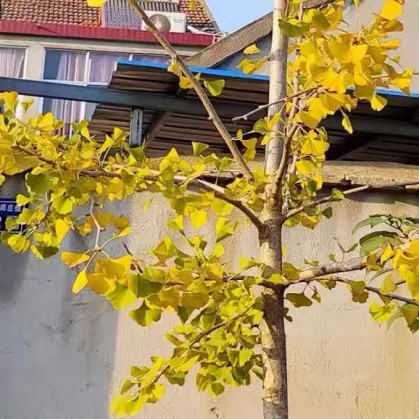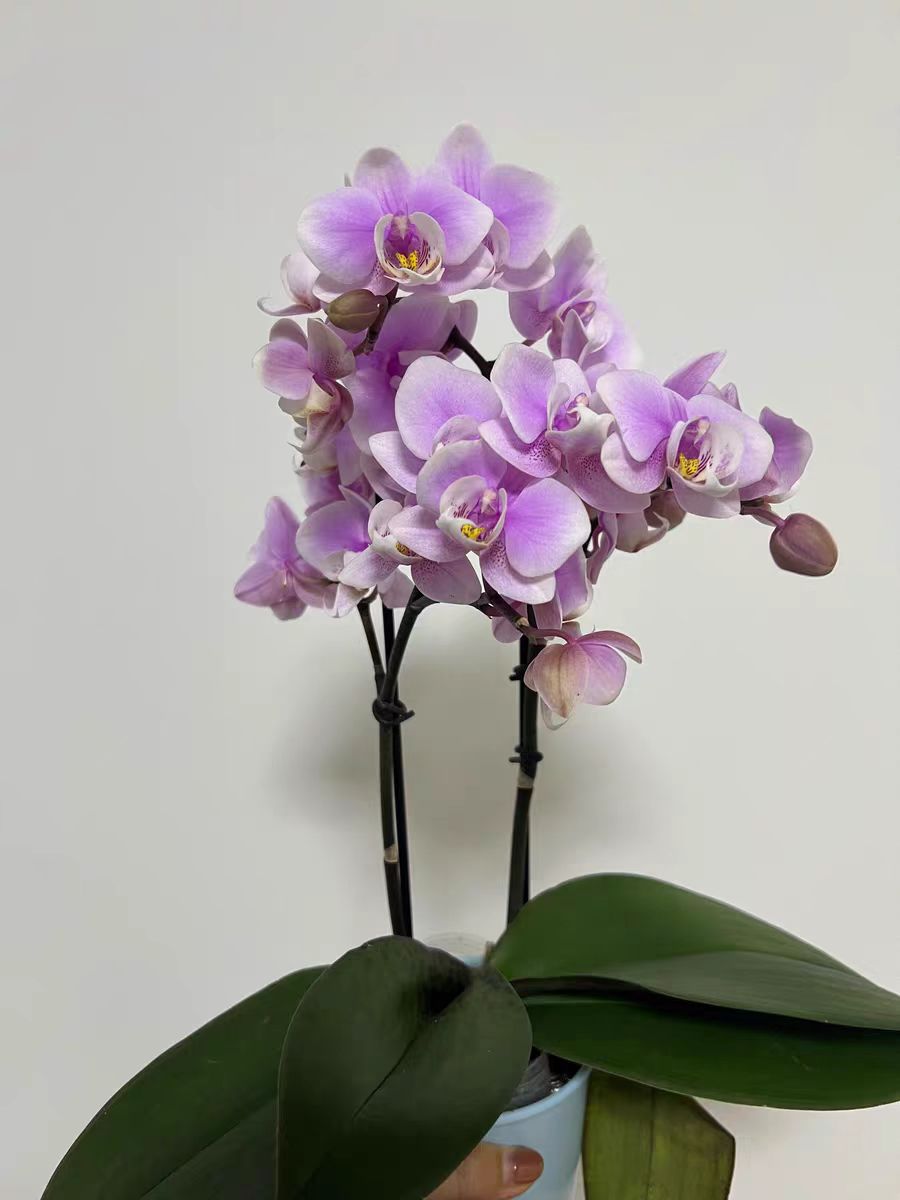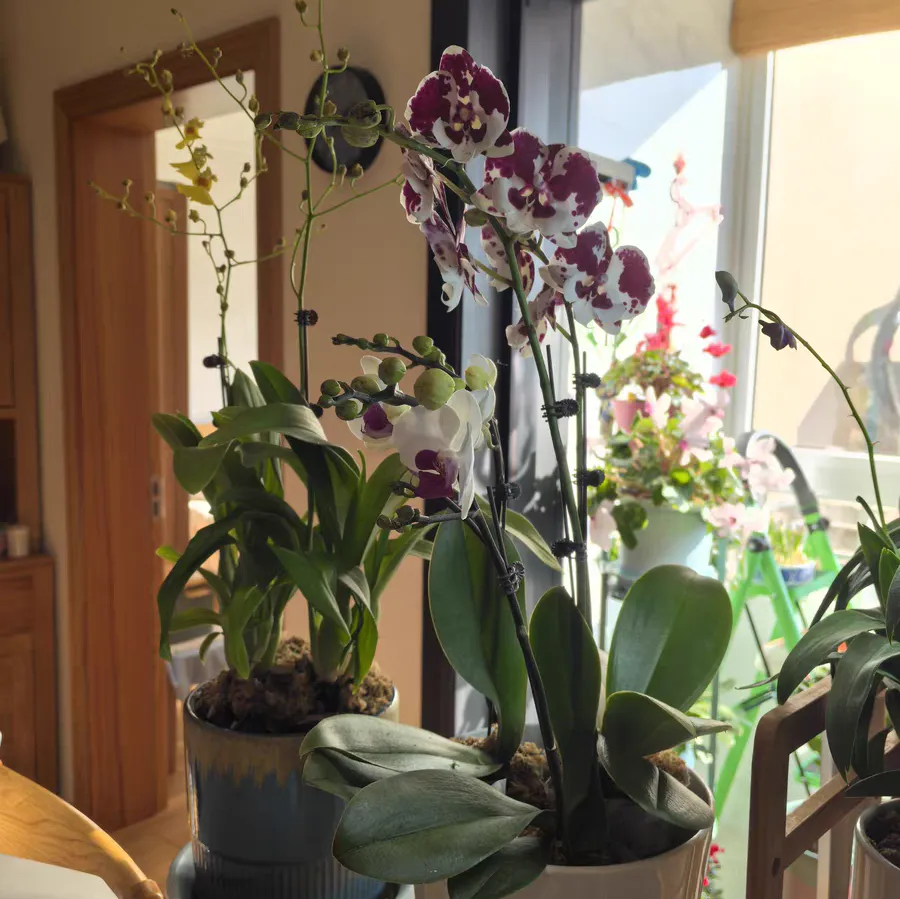The ginkgo tree is a very distinctive ancient tree species.
The ginkgo tree is a deciduous tree of the genus Ginkgo in the Ginkgoaceae family. It has a straight trunk, and the gray - brown bark has irregular longitudinal cracks. Adult trees can reach dozens of meters in height. Its fan - shaped leaves are light green with long stalks. In autumn, they turn golden yellow like golden fans hanging on the branches, shining brightly in the sunlight and having great ornamental value.
The ginkgo tree is a dioecious plant. The male flowers are catkin - like, light yellow and drooping. The female flowers have long stalks, and the top is often bifurcated. Each fork has a disc - shaped ovule - bearing platform on the top, and the ovules are borne on it. Its flowering period is usually from March to April in spring, but the flowering period is relatively short, lasting about 7 - 10 days. During this short flowering period, the ginkgo tree completes important reproductive processes such as pollination.
The fruit of the ginkgo tree, that is, the ginkgo nut, has certain medicinal value. It can moisten the lungs and relieve cough, and has a relieving effect on some lung discomfort symptoms such as cough and asthma. It can also astringe essence and stop enuresis, and has a certain auxiliary conditioning effect on problems related to kidney deficiency. However, it should be noted that the ginkgo nut contains certain toxins, so it needs to be carefully processed when eaten, and excessive consumption should be avoided. In terms of cultural significance, the ginkgo tree occupies an important position in traditional Chinese culture and is often regarded as a symbol of tenacity, longevity, and eternity.
Daily planting and maintenance:
Soil selection: It has strong adaptability. Acidic, neutral or calcareous soils with deep soil layers, fertile, moist, and good drainage should be selected. Before planting, the soil can be improved by adding decomposed compost, manure, etc. to improve fertility and water - and - fertilizer - retaining capacity.
Light conditions: It loves light. The planting site should be sunny and unobstructed to facilitate leaf photosynthesis and promote growth.
Watering management: It is drought - tolerant. In spring and autumn, water it once every 7 - 10 days according to the dryness and wetness of the soil. In high - temperature summer, water it once every 3 - 5 days, and pay attention to preventing water accumulation. In winter, when the growth is slow, reduce watering.
Key points of fertilization: Apply nitrogen fertilizer (such as urea) before sprouting in spring to promote the growth of branches and leaves. Apply compound fertilizer during the vigorous growth period in summer. Apply organic fertilizer in autumn to enhance the tree strength and cold - resistance ability. Fertilizer should be evenly spread within the canopy projection range and combined with watering.
Precautions:
Pest and disease control: Although it is resistant to pests and diseases, it may still be attacked. Leaf blight causes yellowing, drying, and even a large number of fallen leaves. In the early stage of the disease, diseased leaves should be picked off, and fungicides such as carbendazim and chlorothalonil should be sprayed. Pests such as the ginkgo leaf - roller can be controlled by combining physical methods such as manually capturing larvae and setting up insect - attracting lamps with chemical methods such as spraying insecticides.
Pruning and shaping: Prune dead branches, diseased branches, and over - dense branches in winter to maintain the tree shape and ventilation and light transmission. Use sharp and disinfected tools for pruning. The pruning of large ginkgo trees requires professional operation.
Protect the root system: The root system is important for growth. When transplanting, try to bring the soil ball as much as possible. During daily maintenance, avoid excessive digging or construction around the root system.
What are the implications and symbols of the ginkgo tree?

Share with
Tagged in :




Leave a Reply